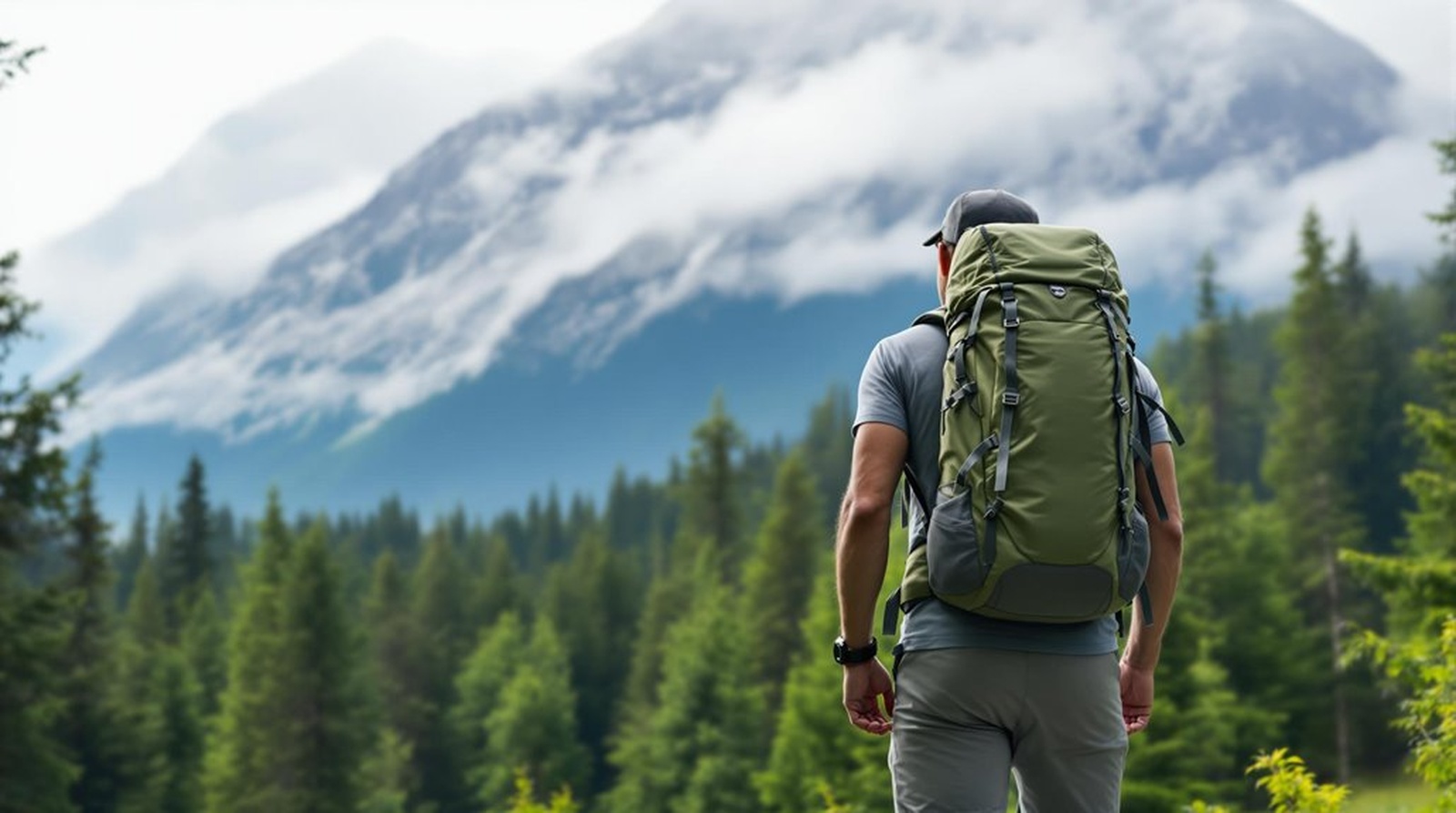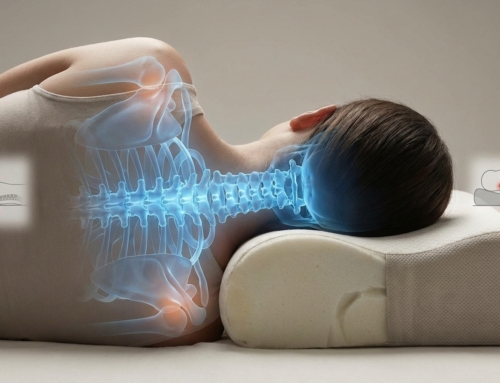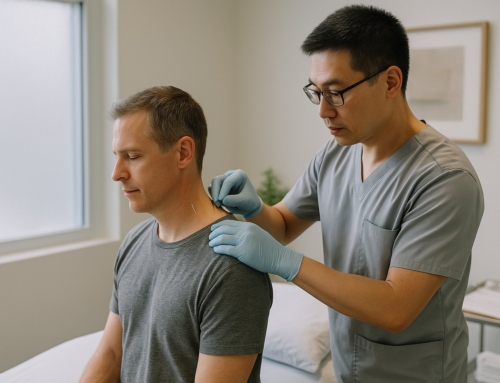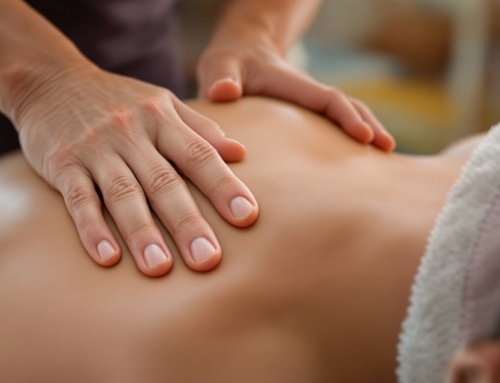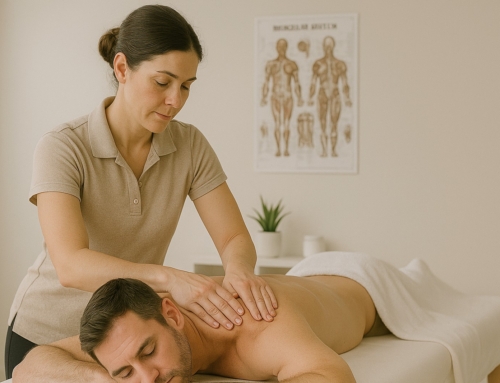Whether you’re tackling the Grouse Grind, the Chief, or just hitting up Burnaby Lake, we’ve seen that a strong core, balanced pack weight, and good posture truly helps back pain on BC trails. From our experience, weak cores and uneven loads are the main problems, made worse by poor walking posture.
Make sure to load your pack evenly, tighten the straps so it sits close to your back, and keep your core engaged when going uphill. Before heading out, test your setup by walking around to check if everything feels stable. This preparation is especially important for challenging trails like North Shore roots or Golden Ears climbs. Simple adjustments will help you hike longer with less discomfort.
Strengthen Core Muscles for Spinal Stability
Strong core muscles protect your back while hiking, whilst your abdominals, obliques, and lower back work together to stabilize your spine on rocky trails and root-covered paths.
If you get the chance, exercises like planks, dead bugs, and bird dogs build resistance against twisting movements. Try these 2-3 times weekly, focusing on slow, controlled movements. We’ve noticed fewer local injuries when hikers strengthen their cores regularly. Build your trail resilience by changing your routine every 3-6 weeks, gradually increasing difficulty to keep improving.
Choose Gear That Protects Your Lower Back
Our lower backs need proper support on tricky trails like East DND or the North Shore. Here’s what works:
- Packs designed to shift weight to your hips, reducing pressure on your spine.
- Adjustable lumbar pads that fit your body shape, with your hip belt positioned correctly.
- Hipbelt-focused designs that carry 80-90% of the load on your pelvis instead of your shoulders.
- Breathable mesh backing to prevent sweat irritation during steep climbs

Balance Pack Weight to Reduce Spine Strain
Proper weight distribution makes a huge difference on British Columbia’s rough trails, so please make sure to keep heavy items close to your spine and use compression straps to secure everything. Hip belts should carry most of your pack weight; adjust them to sit comfortably against your iliac crest.
When hiking routes like the Skyline Trail, weigh your pack to keep it under 20% of your body weight. Your load lifter straps should form a 45° angle from shoulders to pack. Trekking poles help take pressure off your spine. Place medium-weight items higher up to prevent the pack from pulling backwards. Always tighten straps before steep sections to keep everything stable.
Perfect Your Hiking Posture and Gait
We’ve learned how to improve hiking posture and movement. Here’s how you can move better on BC’s challenging trails:
- Keep your core engaged to support your spine on steep terrain.
- Take shorter steps when the ground gets rocky or slippery.
- Coordinate your steps with your poles; many hikers miss this rhythm, but it helps.
- Stop occasionally to reset your posture if something starts feeling uncomfortable.
Staying relaxed, adjusting your stance, and matching your pace to the terrain will help you cover longer distances without excessive fatigue.

Support Back Health Through Nutrition and Recovery
What you eat affects your back health as much as your posture when hiking BC’s varied terrain. Stay on top of your hydration, choose anti-inflammatory foods, and take care of your muscles to handle everything from steep peaks to forest paths.
| Along the Trail | Post-Hike Recovery |
|---|---|
| Hydrate hourly with electrolytes | Nut butter and wholegrain crackers |
| Trail mix and salmon pouches | 10-minute cooldown then foam rolling |
| Berries and dried citrus | Cold compress and 7–8 hours of sleep |
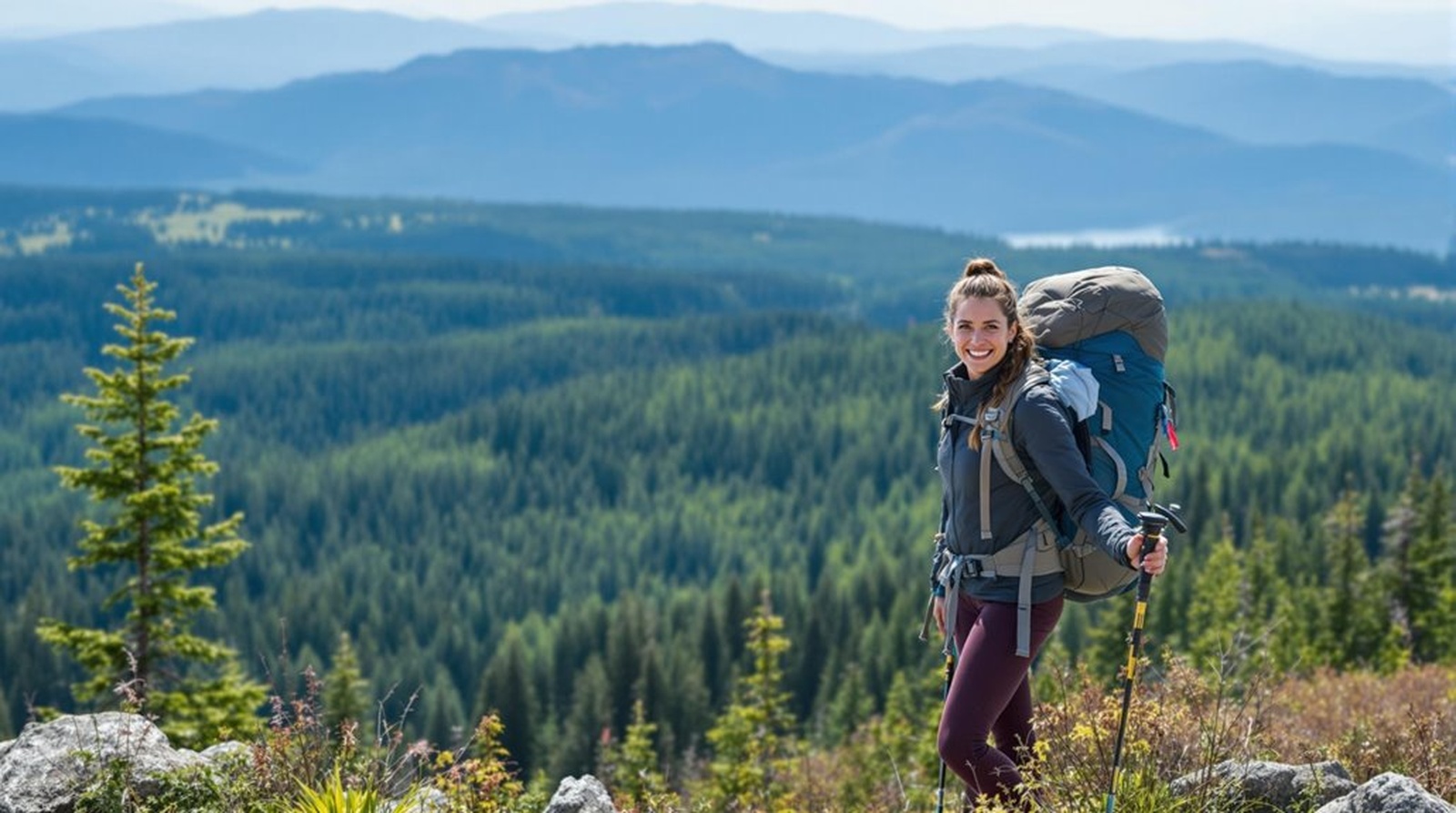
Questions Often Asked
Should I Get a Medical Checkup Before Hiking With Back Issues?
Yes, absolutely. We’ve seen many hikers push through back pain only to face worse problems later. Take Sarah, for example: she ignored her pain and ended up stuck halfway through her trip. Back stress can ruin even well-planned hikes. We check core strength, posture, and movement patterns to identify risks you might miss. Catching problems early prevents injuries before they happen. We’d rather help you prepare than deal with complications later. Your hike should leave you breathless from the stunning views, not from pain.
Do Lumbar Support Belts Help Prevent Hiking-Related Back Pain?
They help somewhat, but aren’t a complete solution. These belts stabilize your spine and distribute weight, which can provide relief by reducing strain. However, results vary as some hikers find them helpful, while others notice little benefit. Combining belts with core strengthening, properly fitted packs, and steady pacing works much better for lasting prevention. On uneven trails where balance and posture are critical, relying solely on a belt misses important aspects of back care. Everyone wants comfort while hiking, but lasting support begins from within.
What Sleeping Positions Protect the Lower Back During Camping Trips?
We suggest sleeping on your back or side to reduce lower back pressure while camping. For extra support, place a pillow under your knees when lying on your back or between your legs when on your side. A rolled towel beneath your waist helps maintain spinal alignment on uneven ground. These simple adjustments can make a significant difference in comfort, helping you rest better despite rough terrain.
How Can Older Hikers Prevent Back Pain on Long Treks?
Older hikers should focus on building core strength before tackling trails, use trekking poles for added stability, and take short breaks regularly to prevent strain. We develop routines that help maintain proper alignment as the terrain changes, keeping your movements fluid and pain-free.
When Should I Consult a Chiropractor for Hiking-Related Back Pain?
We recommend seeing a chiropractor if sharp pains persist longer than 24-48 hours after hiking, if movement causes significant discomfort, or if stiffness doesn’t improve with stretching. Recurring problems that affect your balance or cause repeated trail mishaps should be addressed promptly.

